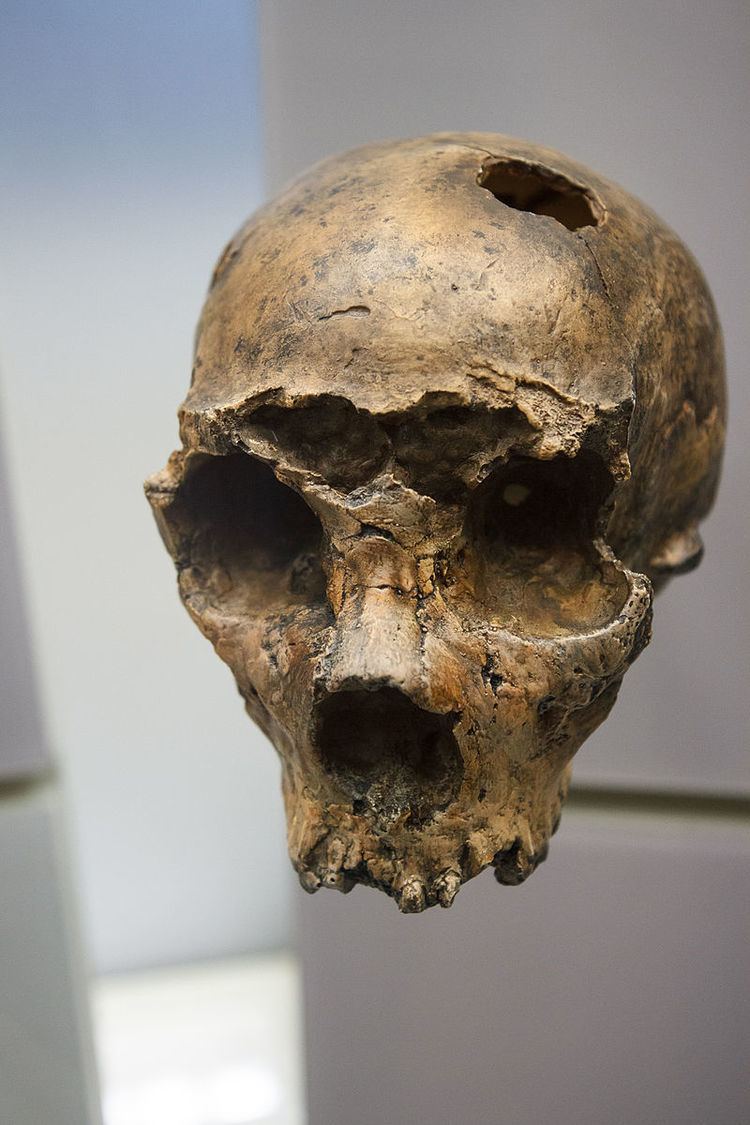 | ||
The Saccopastore skulls are a pair of fossilized hominid skulls that were found by the Aniene river in Lazio, Italy. They were located in a gravel pit about 2.5 km before the Aniene merges into the Tiber river. The first skull was discovered in 1929, and appears to be that of an adult female. The second was found in 1935 by Professors Breuil and Blanc, and forms part of the face of possibly a 35-year-old male. Both specimens appear to be Neanderthal, but display characteristics that differed from classical Neanderthal skulls.
The skulls were originally kept at the Institute of Anthropology of the University of Rome, then under the direction of Professor Sergio Sergi. During World War II he kept them hidden to preserve them from German officers seeking fossil treasures. When Professor Sergi retired as the director, the skulls went into his personal possession.
In 2015, the fossils were re-dated and found to be much earlier than previously thought. The new study concludes that the fossils should be dated to around 250,000 years ago, pushing back the age of the fossils by over 100,000 years and thus surpassing Altamura Man as the earliest evidence for Neanderthals in Italy. The new study was a collaborative effort conducted by geologists from the National Institute of Geophysics and Volcanology working in collaboration with anthropologists and paleontologists from Sapienza University and the University of Wisconsin. This new dating is in line with the perceived age of the eleven stone artefacts found alongside the Saccopastore fossils, which were thought to have been older than the previously assessed date for the fossils.
